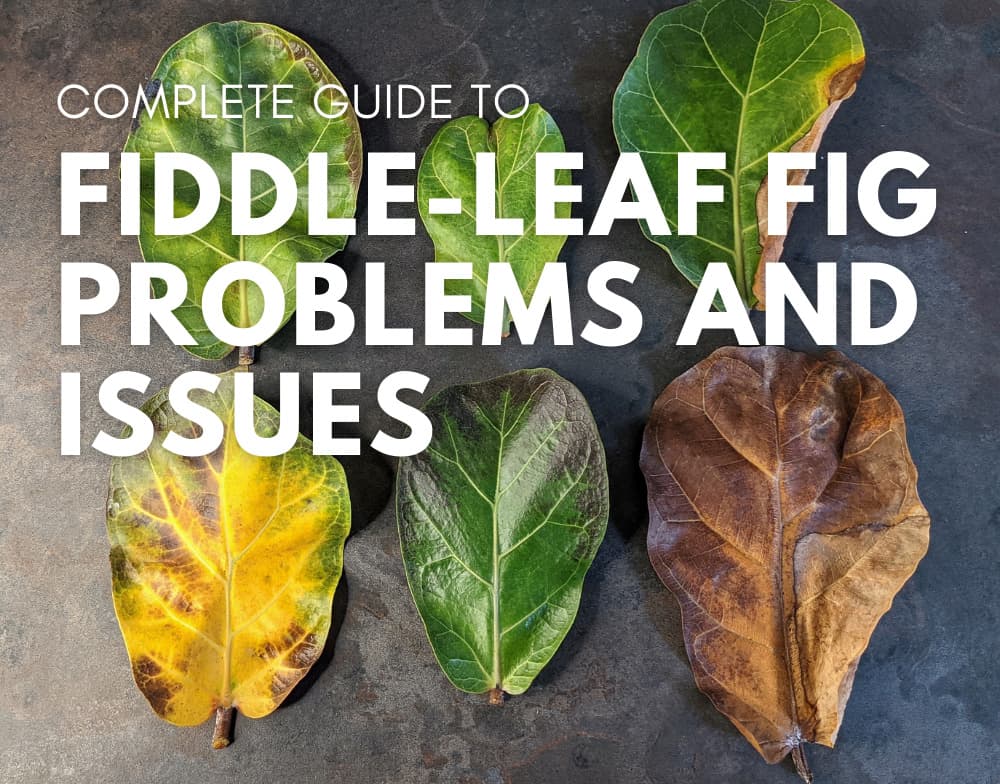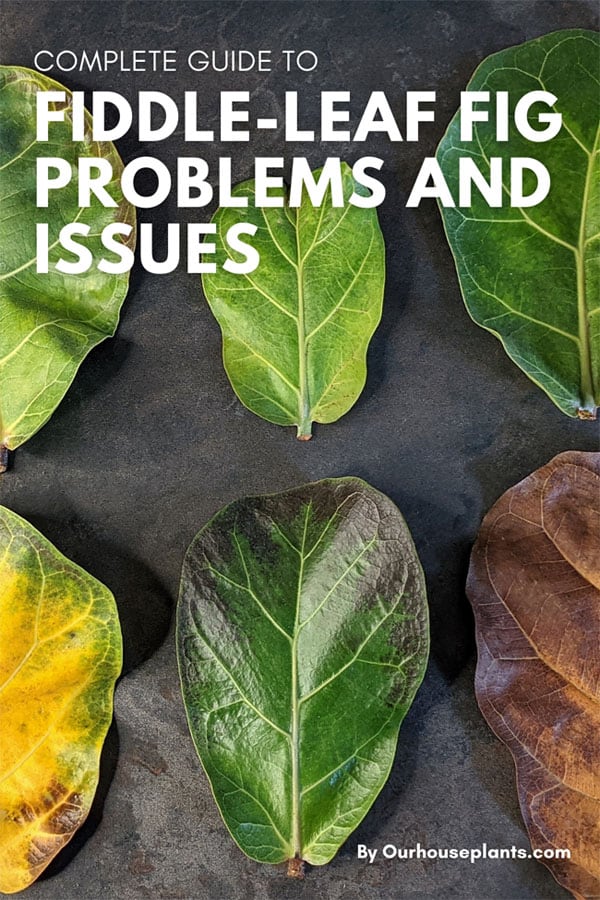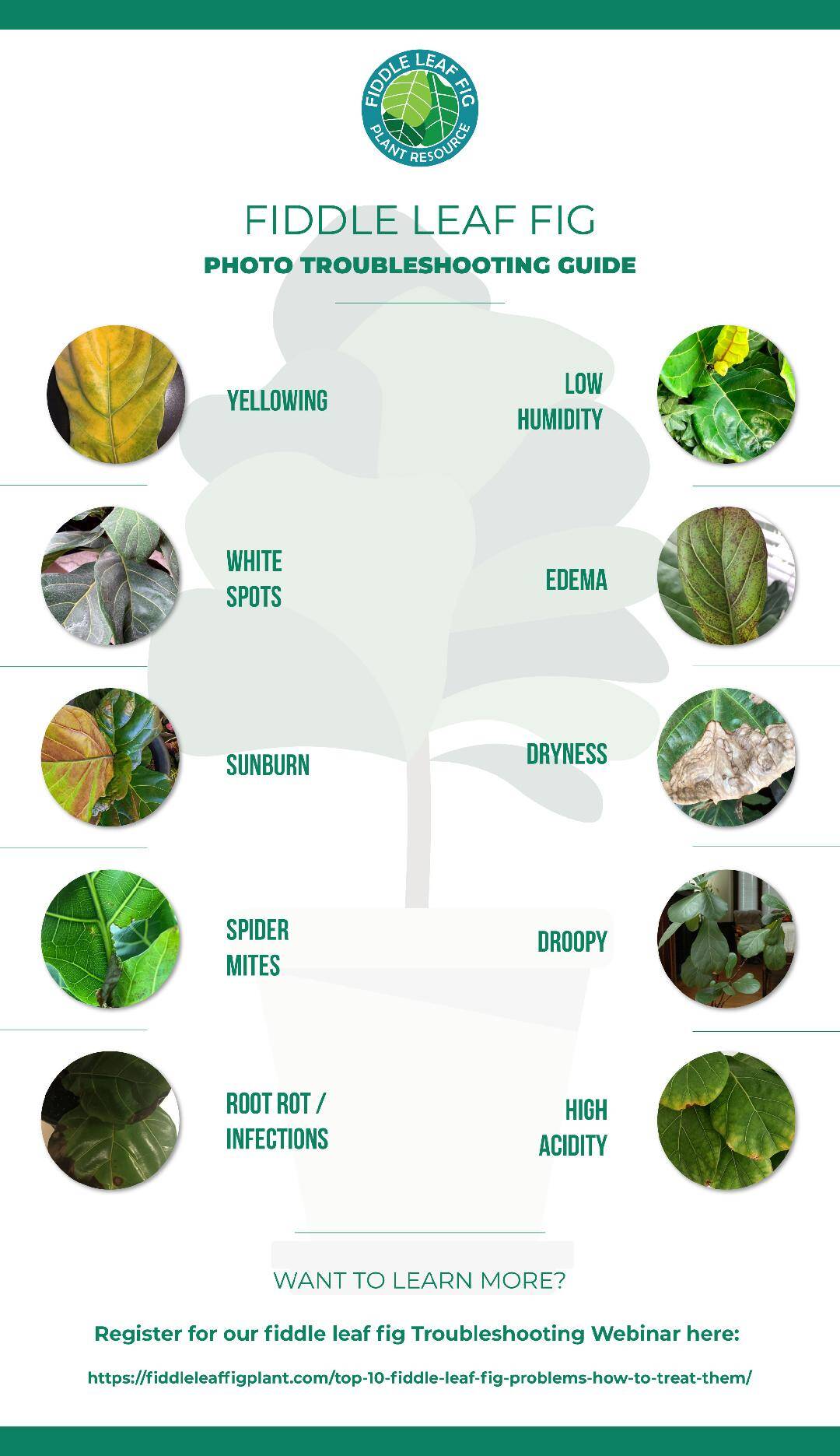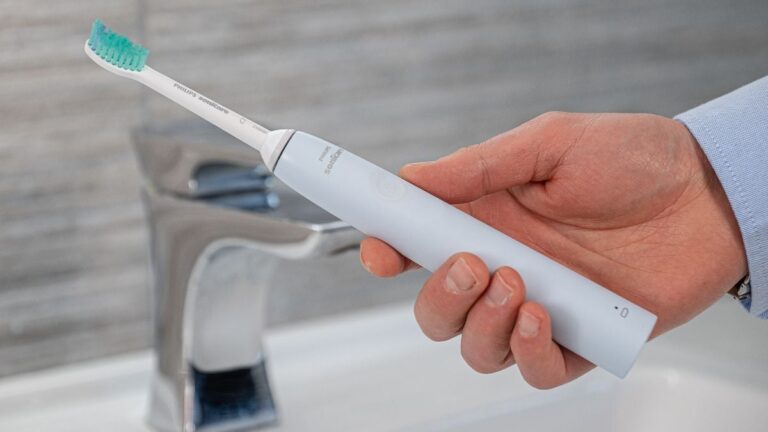Fiddle Leaf Fig Troubleshooting: Expert Tips for Healthy Growth
Fiddle Leaf Figs are popular houseplants known for their large, lush leaves. But they can be tricky to care for.
Many plant lovers face issues with their Fiddle Leaf Figs. Yellowing leaves, brown spots, or drooping can be common problems. Understanding these issues can help you keep your plant healthy and thriving. In this guide, we’ll explore common Fiddle Leaf Fig problems and how to fix them.
Whether you’re a new plant parent or a seasoned green thumb, this troubleshooting advice will help you enjoy a vibrant Fiddle Leaf Fig. Stay with us to learn more about diagnosing and treating your plant’s issues.

Credit: www.ourhouseplants.com
Common Issues
Fiddle Leaf Figs are popular houseplants known for their large, vibrant leaves. Yet, they can be a bit finicky. Understanding the common issues can help you keep your plant healthy. This section will cover the most frequent problems: Yellowing Leaves and Brown Spots.
Yellowing Leaves
Yellowing leaves on your Fiddle Leaf Fig can be a sign of several issues. The most common causes include:
- Overwatering: Too much water can suffocate the roots.
- Underwatering: Dry soil can stress the plant.
- Poor Lighting: Insufficient light can weaken the plant.
To troubleshoot, check the soil moisture level. Use a moisture meter if needed. Adjust your watering schedule accordingly. Also, ensure your plant gets bright, indirect light.
Brown Spots
Brown spots on the leaves can be alarming. They often indicate:
- Fungal Infections: Overwatering and poor air circulation can cause this.
- Sunburn: Direct sunlight can scorch the leaves.
- Pest Infestations: Insects like spider mites can damage the leaves.
First, inspect the plant closely. Check for pests. If you find any, treat the plant with insecticidal soap. For fungal infections, reduce watering and improve air circulation. For sunburn, move the plant to a spot with indirect light.
| Issue | Cause | Solution |
|---|---|---|
| Yellowing Leaves | Overwatering, Underwatering, Poor Lighting | Adjust Watering, Ensure Bright Indirect Light |
| Brown Spots | Fungal Infections, Sunburn, Pests | Treat Pests, Improve Air Circulation, Move to Indirect Light |
Addressing these issues early can save your Fiddle Leaf Fig. Proper care and attention will ensure it thrives.
Watering Tips
Watering your Fiddle Leaf Fig can be tricky. Too much or too little water can cause problems. The right balance is key to keeping your plant healthy. In this section, we’ll explore the best watering tips for your Fiddle Leaf Fig.
Ideal Frequency
Water your Fiddle Leaf Fig about once a week. This allows the soil to dry out between waterings. The top inch of soil should be dry before you water again. Use your finger to check the soil moisture. If it’s dry, it’s time to water.
Adjust the frequency based on the season. In winter, water less often. In summer, you may need to water more frequently. Always consider the plant’s environment and adjust as needed.
Signs Of Overwatering
Overwatering is a common issue. Look for yellowing leaves as a sign. Another sign is wilting, even if the soil is wet. This means the roots are drowning.
Check the soil for a sour smell. This can indicate root rot. If you notice these signs, reduce watering immediately. Allow the soil to dry out completely before the next watering.
Ensure your pot has drainage holes. This helps excess water escape. It prevents water from sitting at the bottom of the pot.
Light Requirements
The Fiddle Leaf Fig is a popular houseplant known for its large, lush leaves. To thrive, this plant needs the right amount of light. The correct lighting can prevent many common issues. Let’s explore the light requirements for your Fiddle Leaf Fig.
Optimal Placement
Place your Fiddle Leaf Fig near a bright, east-facing window. This allows the plant to get plenty of morning sun. Avoid direct afternoon sunlight as it can burn the leaves. Rotate the plant every few weeks. This ensures all sides get equal light.
Avoid placing the plant in corners or dark spots. These areas do not provide enough light. The leaves may turn yellow or drop. If the plant leans towards the light, it needs more sun. You can move it closer to the window.
Artificial Lighting
Sometimes natural light is not enough. In this case, use artificial lighting. LED grow lights are a great option. They provide the right spectrum of light. Place the grow light about 12 inches above the plant. Keep it on for 6-8 hours a day.
Fluorescent lights can also work. Use a combination of cool and warm bulbs. Position the lights close to the plant. This helps mimic natural sunlight. Monitor the plant’s response. Adjust the light distance if needed. Proper light ensures a healthy, vibrant Fiddle Leaf Fig.

Credit: www.ourhouseplants.com
Soil And Potting
The health of your Fiddle Leaf Fig largely depends on the soil and pot you choose. Correct soil and potting methods can save your plant from common issues. These include root rot, yellowing leaves, and stunted growth. Let’s explore the best soil types and how to choose the right pot for your Fiddle Leaf Fig.
Best Soil Types
Choosing the right soil is crucial for your Fiddle Leaf Fig. The best soil types are well-draining and rich in nutrients. Your plant needs soil that allows water to pass through, preventing root rot.
A good mix includes:
- Cactus or Succulent Soil: These soils drain well and prevent waterlogging.
- Peat-Based Soil: It retains moisture without becoming soggy.
- Perlite: Adds air pockets to the soil, improving drainage.
You can also create a custom mix:
- Combine 2 parts cactus soil.
- Add 1 part peat moss.
- Mix in 1 part perlite.
Choosing The Right Pot
The right pot is just as important as the soil. It helps control the plant’s growth and health.
Consider the following factors when choosing a pot:
| Factor | Explanation |
|---|---|
| Size | Choose a pot 2-4 inches larger than the root ball. This allows room for growth. |
| Material | Clay or terracotta pots are ideal. They allow the soil to breathe. |
| Drainage Holes | Ensure the pot has drainage holes. This prevents water from sitting at the bottom. |
Remember, repotting your Fiddle Leaf Fig every 1-2 years can help it grow healthy and strong.
Fertilizing Schedule
Fertilizing your Fiddle Leaf Fig is essential to keep it healthy and vibrant. Understanding the right fertilizing schedule will ensure your plant receives the nutrients it needs. Let’s explore the types of fertilizers and the best application techniques.
Types Of Fertilizers
There are different fertilizers suitable for Fiddle Leaf Figs. Liquid fertilizers work quickly and are easy to apply. Granular fertilizers release nutrients slowly, providing a steady supply over time. Organic fertilizers offer a natural option, improving soil health.
Application Techniques
Applying fertilizer correctly is crucial. For liquid fertilizers, mix with water as per the instructions. Water the plant thoroughly, ensuring even distribution. Granular fertilizers should be sprinkled evenly on the soil surface. Follow with watering to help absorption.
Organic fertilizers need to be mixed into the top layer of soil. This method allows the nutrients to penetrate slowly. Regularly check your plant’s response to adjust the fertilizing schedule if needed.

Credit: fiddleleaffigplant.com
Pruning Techniques
Pruning is vital for maintaining a healthy Fiddle Leaf Fig. It promotes growth and keeps the plant looking its best. Knowing when and how to prune can make a big difference. This section will guide you through effective pruning techniques.
When To Prune
Understanding the best time to prune your Fiddle Leaf Fig is crucial. Prune during the growing season, which is spring and summer. Avoid pruning in fall or winter. During these seasons, the plant is dormant and may not recover well.
Prune when you notice dead or damaged leaves. This helps the plant focus on healthy growth. If your Fiddle Leaf Fig is growing too tall, prune to control its height. Regular pruning encourages a fuller, bushier plant.
How To Prune Safely
Pruning safely requires the right tools and techniques. Use a clean, sharp pair of pruning shears. This helps prevent disease and ensures a clean cut.
Follow these steps for safe pruning:
- Identify the branches or leaves you want to remove.
- Cut at a 45-degree angle, just above a leaf node.
- Make sure not to remove more than 10-20% of the plant at once.
After pruning, monitor your plant for signs of stress. Water it well and keep it in a stable environment. This helps it recover quickly.
Pruning your Fiddle Leaf Fig can seem daunting, but it is essential for a healthy, thriving plant. By following these guidelines, you can keep your plant looking vibrant and strong.
Pest Control
Maintaining the health of your Fiddle Leaf Fig includes monitoring for pests. These pests can damage your plant, causing it to look unhealthy. Here’s how to identify and treat these pests effectively.
Common Pests
Fiddle Leaf Figs can attract several pests. The most common ones include:
- Spider Mites: Small red or brown dots, causing webbing on leaves.
- Mealybugs: White, cotton-like masses, often found in leaf joints.
- Scale Insects: Small brown or black bumps on stems and leaves.
- Aphids: Small green or black insects, usually on new growth.
Identifying these pests early can prevent severe damage to your Fiddle Leaf Fig.
Natural Remedies
Using natural remedies can be effective in controlling pests. Here are some methods:
- Neem Oil: Mix one tablespoon of neem oil with one liter of water. Spray on the affected areas.
- Soap Solution: Combine one teaspoon of mild liquid soap with one liter of water. Spray on pests directly.
- Rubbing Alcohol: Soak a cotton ball in rubbing alcohol. Dab it on the pests to kill them.
- Garlic Spray: Blend garlic cloves with water. Strain and spray on the plant.
These natural remedies can be effective without harming your plant.
Temperature And Humidity
The Fiddle Leaf Fig is a popular houseplant known for its large, glossy leaves. However, it requires specific conditions to thrive. Temperature and humidity play a crucial role in its health. Let’s dive into the ideal conditions and how to manage your indoor climate for this plant.
Ideal Conditions
The Fiddle Leaf Fig prefers a stable environment. Avoid sudden temperature changes. The ideal temperature range is between 60°F and 75°F (15°C to 24°C). Temperatures below 50°F (10°C) can harm the plant.
Humidity levels should be between 30% and 65%. Too low or too high can cause issues. Dry air can lead to brown edges on the leaves. Too much humidity can encourage mold growth.
| Condition | Ideal Range |
|---|---|
| Temperature | 60°F – 75°F (15°C – 24°C) |
| Humidity | 30% – 65% |
Managing Indoor Climate
Maintaining the right temperature and humidity is essential. Here are some tips to help:
- Avoid drafts: Keep the plant away from windows and doors that open frequently.
- Use a humidifier: If your home is dry, a humidifier can increase humidity levels.
- Group plants together: Plants release moisture, so grouping them can naturally raise humidity.
- Monitor with a hygrometer: This device helps you keep track of humidity levels.
- Keep away from heat sources: Avoid placing the plant near radiators or heating vents.
By following these tips, you can ensure your Fiddle Leaf Fig stays healthy and vibrant.
Frequently Asked Questions
How Do I Know If My Fiddle Leaf Fig Is Dying?
Check for yellowing leaves, brown spots, or drooping. These are signs of distress.
Why Are My Fiddle Leaf Fig Leaves Turning Brown?
Brown leaves can be caused by overwatering, poor drainage, or low humidity. Check soil and adjust care.
How Often Should I Water My Fiddle Leaf Fig?
Water once the top inch of soil is dry. Usually, this is once a week.
What Is The Best Light For Fiddle Leaf Figs?
Fiddle leaf figs need bright, indirect light. Place near a window with filtered sunlight.
Can I Save A Fiddle Leaf Fig With Root Rot?
Yes, trim affected roots and repot in fresh, well-draining soil. Reduce watering frequency.
Conclusion
Caring for a Fiddle Leaf Fig can be challenging but rewarding. Address issues early for healthier growth. Remember to check for proper light, water, and humidity levels. Prune damaged leaves to encourage new growth. Regularly inspect for pests and treat promptly.
A healthy plant enhances your living space. Your Fiddle Leaf Fig will thrive with attention and care. Keep learning and adapting your care routine. Happy growing!






